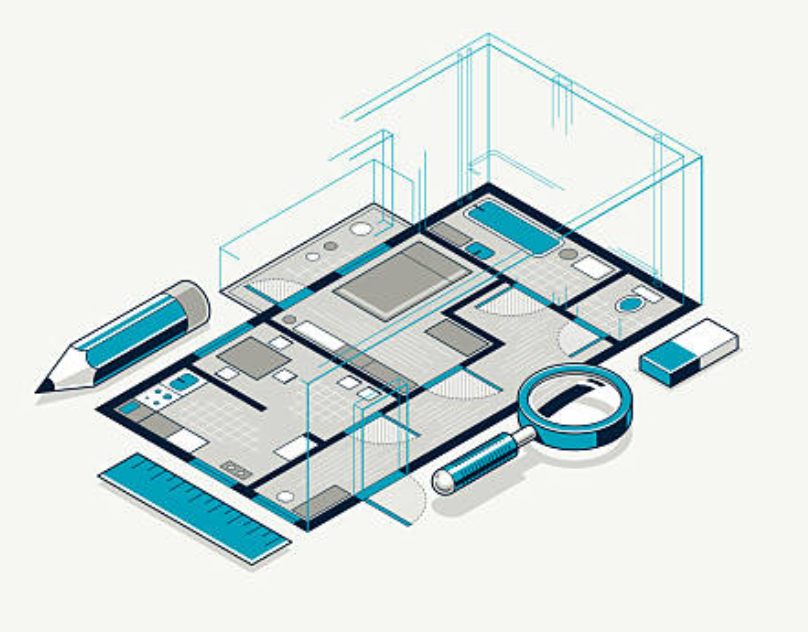
Have you ever tried to manage a large construction project or a portfolio of apartment buildings with nothing but reams of paper, scanned PDFs, and scattered spreadsheets? The PropTech industry is rapidly changing everything, but it often gets stuck right here: in the frustrating and expensive process of handling documents. This friction slows down rent collection, delays construction, and introduces errors in every financial estimate.
The problem is that files like architectural blueprints, complex contracts, and handwritten site logs hold vital data that is locked inside an unstructured format. Converting these static files into clean, searchable information is the first and biggest step toward true modernization and effective real estate software development. This essential transformation is what drives real gains in productivity and accuracy across the entire construction and property management sector.

Architectural drawings most often include valuable tables of window types, sizes, and materials, typically referred to as window schedules. This information is crucial to getting precise cost estimates and the proper materials ordered. This information traditionally has been buried deep within large PDF files, making it necessary for staff to physically measure and write down every little detail, which, on large projects, too often results in costly ordering errors.
IDP solves this problem by intelligently using AI to locate such tables, extract the structured data, and feed it directly into cost estimation systems. The ability to skip manual data entry saves huge amounts of labor time.
Companies from different segments of the construction industry use IDP to manage heavy workflows. For instance, Swinerton, a US-based construction company, has used OCR-enabled tools to digitize plan revisions. With such tools, teams can redline and track changes on scanned architectural drawings easily; thus, the most recent versions are traceable and accessible by all teams involved, improving efficiency drastically and reducing expensive miscommunications on site.

In PropTech, handling massive volumes of real estate contracts-like lease agreements, purchase contracts, and service agreements-is an extensive and high-risk process. Within these documents are critical clauses related to escalations of rent, maintenance duties, and termination rules. Manual reviews over hundreds of pages for such clauses are incredibly time-consuming and can often miss the small details that might come at a big cost.
Custom AI solutions revolutionized this process. IDP tools can identify and evaluate relevant provisions much faster by transforming unstructured text into structured data. The technology makes use of sophisticated language models in identifying, classifying, and extracting specific clauses such as indemnity terms and renewal options. This greatly enhances efficiency and reduces the risk of expensive oversights in legal and property management departments.
For example, the solutions provider Ascendix Technologies partners with property firms to build out custom contract data extraction systems. This work allows clients to automatically abstract key clauses like lease terms and rent escalation details. This kind of specialized, custom AI solution work is crucial in large-scale management environments, where manual review is simply impossible to scale safely.

Yet, even today, most of these construction teams still rely on handwritten logs to record daily site progress, inspection results, and safety checklists. These paper notebooks are fairly easy for supervisors to use on-site but make it close to impossible to search for specific entries later on. That means valuable insights get lost in piles of physical paperwork.
OCR takes that process to the next level by turning those handwritten notes into digital, searchable records without forcing any change in how people work in the field. This keeps the simplicity of pen and paper while immediately unlocking the door to better data access and reporting.
Firms like ELEMSI use platforms that combine OCR/IDP in order to turn handwritten notes, PDFs, and checklists into searchable data. This has been shown to cut the time taken for site inspections by half and ensures that critical issues are logged and addressed straightaway. In effect, AI development service usage bridges the gap between the field activity and back-office coordination by increasing accountability and operational speed across the board.

In construction and property procurement, confirmation is usually required of what was ordered-purchased order-what has been delivered-delivery note-and what is being billed-invoice. Manual cross-checking of these documents is tedious and may lead to costly errors such as overpayments and duplicate payments.
IDP simplifies this process by automatically reading and matching key fields from all three documents. More recently, AI-driven platforms such as Vic.ai have introduced autonomous solutions, which draw on OCR and machine learning to handle sophisticated 2-, 3-, and even 4-way matching of financial transactions. This automation significantly reduces financial oversight, resulting in superior financial control and efficiency.
IDP technologies have become integral to a fundamental shift in how the property technology and construction industries are tackling the profound issue of unstructured data. They make document-intensive workflows-from extracting window schedules and spotting contract clauses to digitizing site logs-faster, less expensive, and error-free, while offering unparalleled operational visibility.
At AxcelerateAI, custom foundation models are built on your own documents for maximum accuracy and a seamless integration into unique workflows. This expertise ensures that you have a proprietary advantage which is measurable and offered by no standard software. Ready to slash documentation costs and speed up project delivery? Contact us to discuss customized AI development services for your organization.

Unlock PropTech automation. Learn how our custom AI uses Computer Vision and geometric reasoning to extract data from floor plans, reducing costs.

.png)
Automate grading, curriculum mapping, and student records. See 5 top use cases where IDP and OCR transform academic operations.


Unlock logistics efficiency with OCR and IDP: Automate inventory, supply chain tracking, and compliance. See real examples from DHL and Maersk.


Unlock PropTech automation. Learn how our custom AI uses Computer Vision and geometric reasoning to extract data from floor plans, reducing costs.

.png)
Automate grading, curriculum mapping, and student records. See 5 top use cases where IDP and OCR transform academic operations.


Unlock logistics efficiency with OCR and IDP: Automate inventory, supply chain tracking, and compliance. See real examples from DHL and Maersk.
